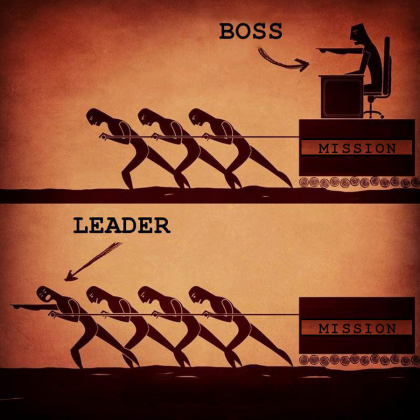05
20162017: Ten Non-profit Trends
2017 is shaping up to be a watershed year for non-profits. Major change looms, especially in government policy, where government discretionary spending will go down, tax policy will change and health care and other social services will get major rearranging. These changes will affect the private sectors -the for-and non-profits- in varying ways but with opportunity for growth and greater service. Sector shift will continue. Government will both get out of some direct services and cut funds traditionally flowing to non-profits. Non-profits will be called upon to fill gaps left by these changes. B-Corps and other double and triple bottom…
30
2016
New Twists on Philanthropy
Last week saw an interesting development in the world of philanthropy, usually defined as giving money to good causes. Often there is also an assumption that it’s done as a donation to a charity, with a tax deduction for the gift. Now we have two examples where that isn’t the case, or almost not the case. Variants on the impact investments of foundations and greater flexibility allowed private business, these new efforts have a much more defined focus. When the examples are provided by George Soros and Dr. Priscilla Chan and Mark Zuckerberg, other philanthropists take notice. George Soros’ Focus on…
08
2016
Let’s Prove Howard Buffet Wrong!
Here’s what Buffet believes: “Charity doesn’t solve a long-term problem. It addresses an immediate situation, but it won’t solve anything.” He still gives money philanthropically, but prefers to be part of the movement to achieve impact through entrepreneurial solutions. Yet, we in the nonprofit world, certainly up to our eyeballs in immediate situations, also know a considerable amount about longer-term solutions. Take homelessness. Much of the resources that are available are spent in the day-to-day task of sheltering and feeding those experiencing homelessness. Yes, true, although we do know that first obtaining secure, long-term, safe housing in an environment where…
30
2016
Is Impact Investing Working?
A Post from Jim Toscano An early indicator in preliminary findings in an ongoing study from the Wharton School is demonstrating that impact investing in companies doing desirable social or environmental work does not necessarily have to compromise financial return. The dual bottom-line goals of financial return and long-term impact seem possible. “Great Expectations: Mission Preservation and Financial Performance in Impact Investing” analyzed the performance of over 50 private equity funds focusing on impact investing. Examining more than 500 specific investments, the study found these investments had similar results as such indices as the Russell 2000. The private equity funds chosen…
15
2015
2016: Ten Nonprofit Trends
Change is accelerating in the non-profit sector to a degree that the following trends will become highly visible and important in the new year: Sector Shift: Very slowly, over 50 years ago, the government sector began shifting social services to the nonprofit sector, resulting in much of the responsibility for this area being privatized. Certainly, government is still funding significant portions, along with the added foundation, corporate and individual donors. Now, with social impact investing, for-profit companies, including B-Corps and others, fueled by foundation corpus investments, social impact bonds, mutual funds and individual donor/investors, are taking on low-hanging fruits to produce…
22
2015
What Should We Look For When Hiring a Nonprofit CEO?
Now that the 401Ks have bounced back, the stresses of running nonprofits are at record highs and many CEOs are in their sixties, we are witnessing a rather disproportionate CEO vacancy rate in nonprofit-land. Clearly the headhunters are doing well running high-paid searches. Their stock in trade is experience, wide networks, skill in interviewing and negotiating, finding out what is really needed and socio-metrics. The last item involves asking around about people who are potential candidates. We’ve all gotten those calls. The real question for the pros and for those agencies that are doing searches themselves is what should we look…
15
2015
Guest Post – A Nickel Sent Was A Nickel Wasted (Almost)
By Jim Thalhuber I received a solicitation in the mail today from a well-known national nonprofit organization and there it was, peeping through the small, round window on the front of the envelope — a shiny, brand new 2015 “Return to Monticello” nickel, minted in Denver, bearing an image of President Thomas Jefferson (based on the Rembrandt Peal painting of 1800) on the obverse and the 1938 restored design of Jefferson’s Virginia home of Monticello on the reverse. I trust/hope that the soliciting nonprofit organization has done its homework and can prove that the nickel gambit is effective in securing new…
07
2015
A New Collaboration?
Foundations must spend at least 5% of their corpus each year, under a federal requirement governing their activities. Imagine what could be done if all of their corpus–spending and investments-were directed at their missions? What about their staffs—those substantive and technical experts they hire—could they work cooperatively as truly equal partners with nonprofits and for-profits in the formulation of the very projects they all want to see succeed? For many years, a handful of foundations have been making program-related low interest loans to further their mission; others have been managing investments away from certain areas, e.g. cigarettes, fossil fuels, gambling…
23
2015
Organizing for Success
As consultants, we are engaged for many reasons: an organization has a great mission, but needs help to operationalize its program; or an organization has a need for funding, but doesn’t have a plan; or the Executive Director micromanages and needs help in sorting out what she/he should actually be doing. One thing every organization needs is time. Time to plan. Time to think about the how’s, who’s and when’s. Planning is key to operational success. Yet, we hear clients tell us they feel reactive or they are constantly trying to get ahead of the work, ahead of funding deadlines, ahead…
02
2015
A New, Old Fear
Since the great recession of 2007-2010, gifts to charities have changed in subtle ways. Not only was there a temporary reduction in overall totals, but the mix has also changed. The interior and shape of the gift pyramid have changed. Donor behavior has changed. There are many bright spots as we emerge from the crisis. We hear many accounts of increases in digital giving, often in small amounts, although in larger numbers. Certain “days” resound with increasing totals, such as the Give to the Max and Giving Tuesday. Crowd-funding may be a new avenue, or a temporary fad. We also…
